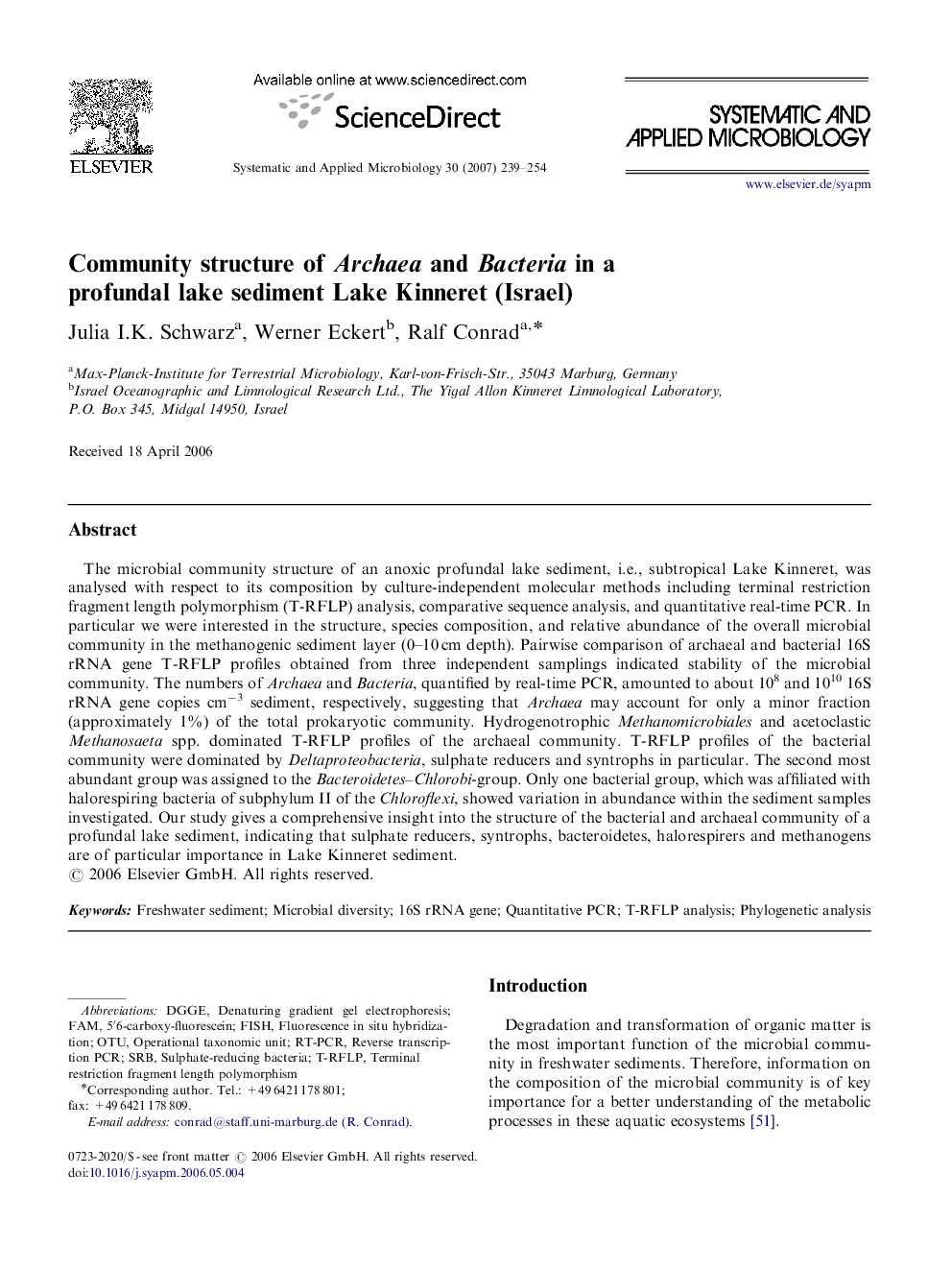| Article ID | Journal | Published Year | Pages | File Type |
|---|---|---|---|---|
| 2063420 | Systematic and Applied Microbiology | 2007 | 16 Pages |
The microbial community structure of an anoxic profundal lake sediment, i.e., subtropical Lake Kinneret, was analysed with respect to its composition by culture-independent molecular methods including terminal restriction fragment length polymorphism (T-RFLP) analysis, comparative sequence analysis, and quantitative real-time PCR. In particular we were interested in the structure, species composition, and relative abundance of the overall microbial community in the methanogenic sediment layer (0–10 cm depth). Pairwise comparison of archaeal and bacterial 16S rRNA gene T-RFLP profiles obtained from three independent samplings indicated stability of the microbial community. The numbers of Archaea and Bacteria, quantified by real-time PCR, amounted to about 108 and 1010 16S rRNA gene copies cm−3 sediment, respectively, suggesting that Archaea may account for only a minor fraction (approximately 1%) of the total prokaryotic community. Hydrogenotrophic Methanomicrobiales and acetoclastic Methanosaeta spp. dominated T-RFLP profiles of the archaeal community. T-RFLP profiles of the bacterial community were dominated by Deltaproteobacteria, sulphate reducers and syntrophs in particular. The second most abundant group was assigned to the Bacteroidetes–Chlorobi-group. Only one bacterial group, which was affiliated with halorespiring bacteria of subphylum II of the Chloroflexi, showed variation in abundance within the sediment samples investigated. Our study gives a comprehensive insight into the structure of the bacterial and archaeal community of a profundal lake sediment, indicating that sulphate reducers, syntrophs, bacteroidetes, halorespirers and methanogens are of particular importance in Lake Kinneret sediment.
